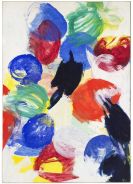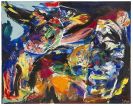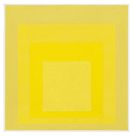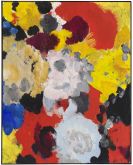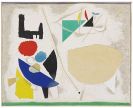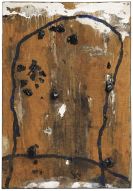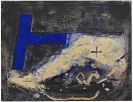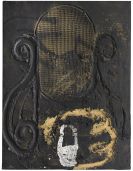
Erich Hauser
Rietheim bei Tuttlingen
1930 -
Rottweil
2004
From 1945-48, Erich Hauser trained as a steel engraver whilst also receiving lessons in drawing and modelling from Pater Ansgar in the Beuron Monastery. After attending evening classes at the "Freie Kunstschule" Stuttgart, Department of Sculpture, Hauser became a freelance sculptor from 1952 onwards. Initially, he worked in the tradition of the sculptures of Pablo Picasso and Berto Lardera. He was influenced by contemporary Tachistic painting in his use of metals, and initially still left clear traces of gestures before deciding on a smooth surface. Unlike Henry Moore, whom he greatly respected, he used industrially pre-fabricated steel plates from 1962 onwards. This went hand in hand with his tackling of geometric basic forms and technoid building elements which characterise Erich Hauser's first independent works. From composed areas, he created hollow, plastic objects constructed on all sides, with angular ridges and pits. He joined the set pieces together in such a way that, in the final result, they tended to take on a regular form, e.g. a sphere, cube or pyramid, but also showed their own disintegration, their collapse into ruins.
In 1964, he took part in "documenta" in Kassel for the first time; and also showed works there in 1968 and 1977. In 1964-65, Erich Hauser was guest lecturer at the "Hochschule für Bildende Künste" in Hamburg.
An important motif in Hauser's later works is the pillar - from 1967 onwards, he created pillars from smoothly polished, curved metal plates in the form of tubes divided lengthways, apparently as fragments of themselves.
In 1969 he became a member of the Academy of Arts in Berlin. From the 1970s he created many works for public spaces including, in 1971, a double-room pillar for the Hesse National Museum in Darmstadt, and in 1977 the wall design for the Berlin National Library. In addition to commissioned works, Erich Hauser, who moved to Rottweil in 1970 and played a major role in building up the nationally famous "Forum Kunst" there, also created smaller sculptures for which he preferred to use sickle or discus shaped plates and cuboid blocks.
From 1984-85, Erich Hauser was guest professor at the "Hochschule für Bildende Künste", Berlin, and in 1986, he was granted the title of Professor by the State of Baden-Württemberg. The Erich Hauser Foundation was established in 1996. Among the most important honours are the medal of merit of Baden Wuerttemberg, he received in 2000 and the culture prize of the city of Rottweil.
Would you like to sell a work by Erich Hauser?
Infos for seller
